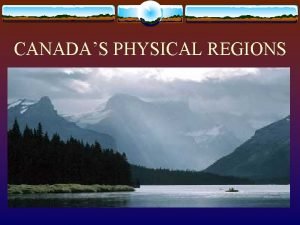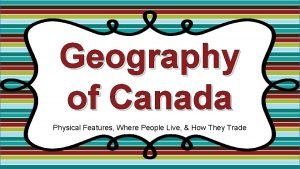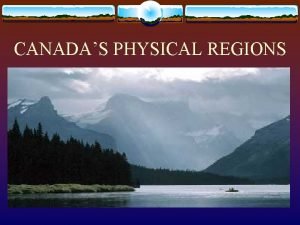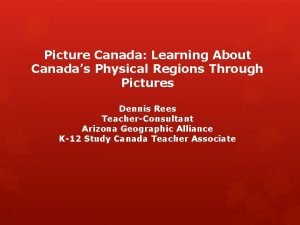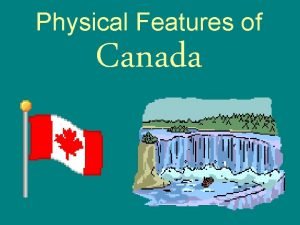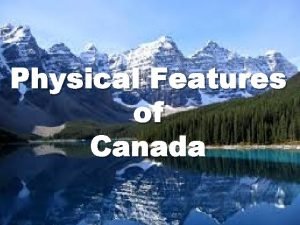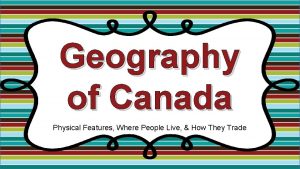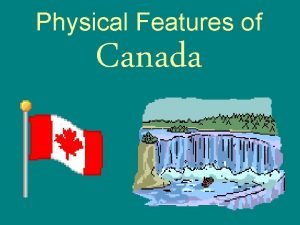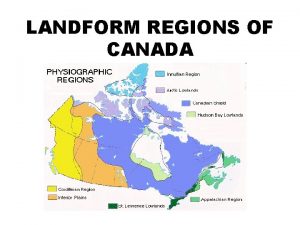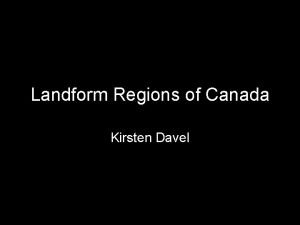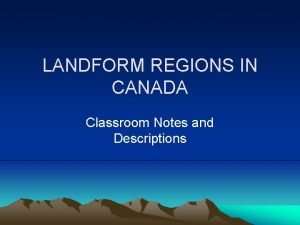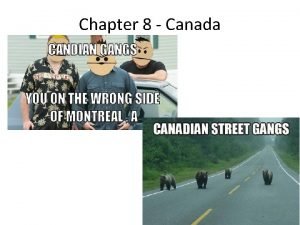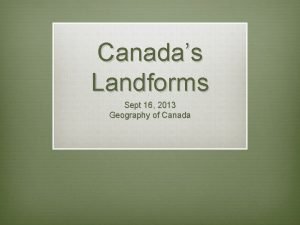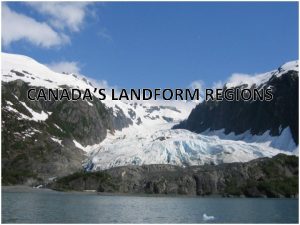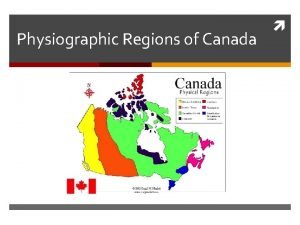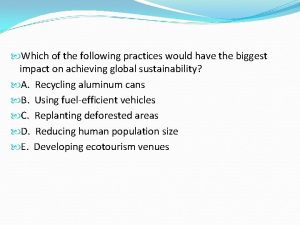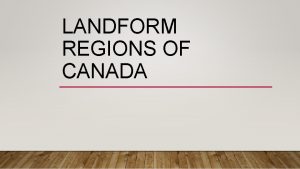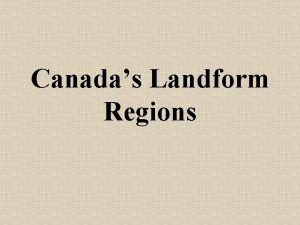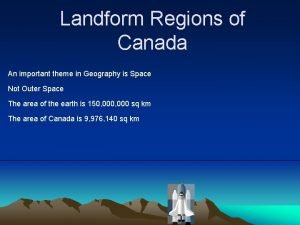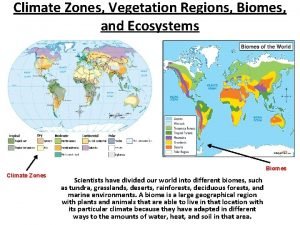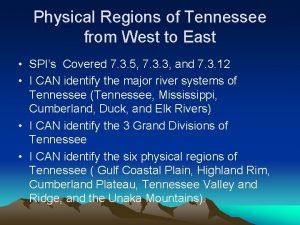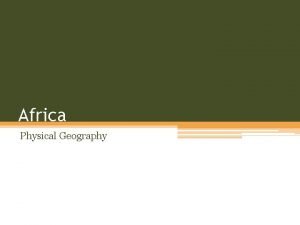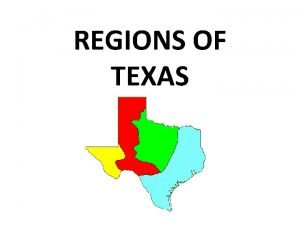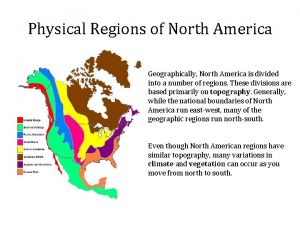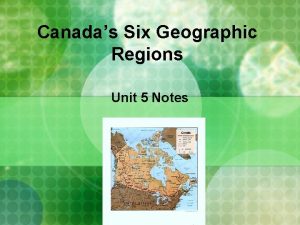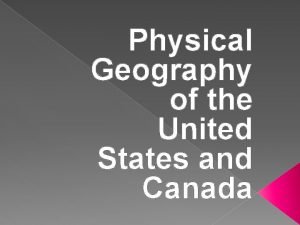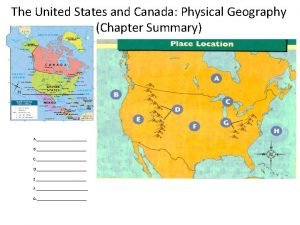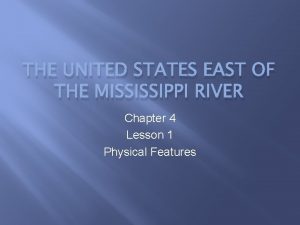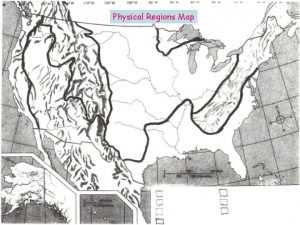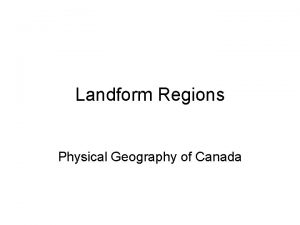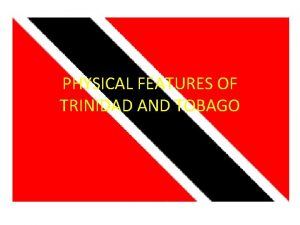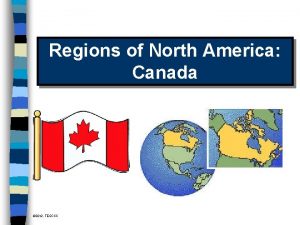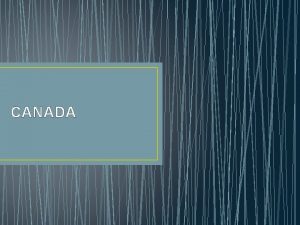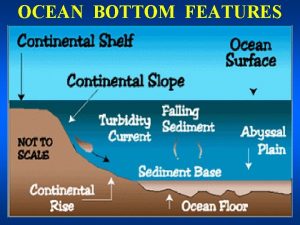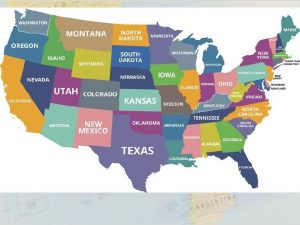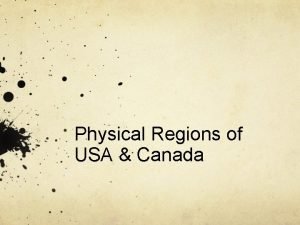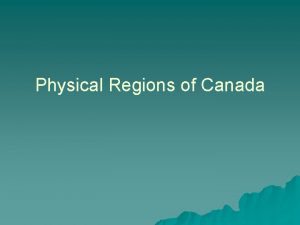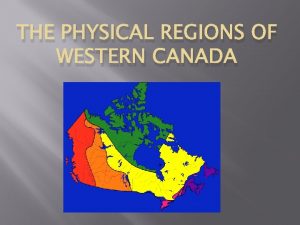Physical Features of Canada Physical Regions of Canada





























- Slides: 29

Physical Features of Canada

Physical Regions of Canada

Great Lakes • 5 large freshwater lakes in central North America – HOMES (Huron, Ontario, Michigan, Erie, Superior) • Serve as the “industrial heartland” of the continent because of all of the factories • One of the world’s busiest shipping areas – Most of Canada’s population lives in this region



St. Lawrence River • Major source of overseas and US/Canada shipping & trade – Shortcut that connects the Great Lakes to the Atlantic Ocean • Huge producer of hydroelectricity



St. Lawrence Seaway • A canal completed in 1959 at the eastern end of the Great Lakes – Connects the Great Lakes with the St. Lawrence River (which flows to the Atlantic Ocean) • Major source of overseas and US/Canada shipping & trade – Closed from November to April (frozen) – Seaway has made cities in Eastern Canada home to many successful manufacturing



Hudson Bay • HUGE inland sea in east central Canada • “an arm” of the Atlantic Ocean – Grain from Alberta & Saskatchewan is shipped from Hudson Bay out to the Atlantic and on to other countries – Only navigable from July to October




Atlantic Ocean • 2 nd largest of the earth’s 5 oceans • Most heavily traveled ocean • Forms the eastern border of Canada – Major shipping route to Europe & Africa

Pacific Ocean • Largest & deepest of the world’s 5 oceans • Covers 1/3 of the earth’s surface! • Western border of Canada – Major shipping route to Asia

Canadian Shield • Stretches from Great Lakes to Arctic Ocean; covers half of Canada! – Horseshoe region around Hudson Bay • Region of mostly thin soil lying on top of rock, with many bare outcrops of rock & thousands of lakes • Major source of natural resources: timber, minerals, & water • Region is sparsely populated



Rocky Mountains • Mountains located in Western Canada – Includes western Alberta and eastern British Columbia • Stretch a distance of 2, 000 miles! • Mining is the biggest industry in the region, followed closely by logging – Major minerals include: iron ore, copper, coal, gold • Sparsely populated & contain few cities






Be the Thing… • Your Task: – Choose 1 of the physical features – Fold your paper “hamburger style” to make a desk tent • On the front : Imagine that you are one of the features. Write 5 facts about yourself. • On the back: draw an illustration of the feature – We will walk around and try to guess the features!

My Example… Who Am I? • Brrrrr! I am always so cold!! It’s chilly up here in northern Canada. • I am so tired of everybody always picking on me. Dig, dig all day long. • I wish I had some pretty trees to look at…All that I can see is scraggly trees and flat, rocky land. • It’s so lonely. No one lives near me.

The Canadian Shield!
 Canada physical region
Canada physical region Canada's physical geography
Canada's physical geography What is a physical region
What is a physical region Physical regions in canada
Physical regions in canada Do the great lakes connected to the ocean
Do the great lakes connected to the ocean Physical features of canada map
Physical features of canada map Canada physical features
Canada physical features 5 physical features of canada
5 physical features of canada Natural vegetation
Natural vegetation Profile of southern canada's landform regions
Profile of southern canada's landform regions Oldest landform region in canada
Oldest landform region in canada Weather in the cordillera region canada
Weather in the cordillera region canada 8 regions of canada
8 regions of canada Landform regions of canada map
Landform regions of canada map Innuitian mountains population
Innuitian mountains population Canada physiographic regions
Canada physiographic regions Starlings displacing bluebirds from nesting sites
Starlings displacing bluebirds from nesting sites Landform regions of canada
Landform regions of canada Canadian landform map
Canadian landform map How were the appalachians formed
How were the appalachians formed Biomes
Biomes Physical regions of tennessee
Physical regions of tennessee 8 major physical regions of africa
8 major physical regions of africa Texas regions map
Texas regions map 8 physical regions of north america
8 physical regions of north america Physical regions of the world
Physical regions of the world Canadas physical regions
Canadas physical regions United states and canada physical map
United states and canada physical map Define landform
Define landform The united states east of the mississippi river
The united states east of the mississippi river
